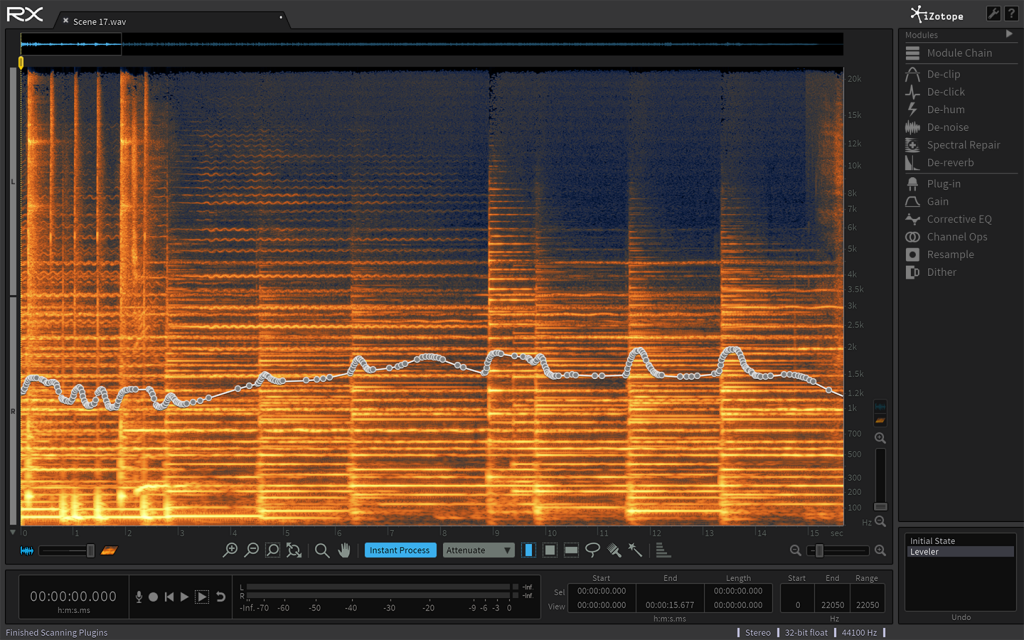
Often, you don't need to use the restoration modules because many tasks can be carried out easily using the main edit window to select (and even solo) the most specific areas, which can then be processed with gain or EQ. The alternative is the most advanced spectrogram we've ever seen, enabling you to select and isolate any frequency at any specific time for discrete processing. The first is the regular waveform view, which we're used to seeing in virtually all wave editors, with amplitude on the vertical axis.

The main window has two visual modes, which you can fade between. So far we've only looked at the individual restoration modules, but it could easily be said that RX's edge is in its purpose-built editor. A built-in compare function means that you can have RX render the selected audio with different settings, then flick between them to determine which you like the sound of best. What's more, with the right kind of audio, the results can be highly impressive, and you can get very creative by abusing this module. The results are highly dependent on the source material, and they don't always sound right, but hey, this is, after all, an 'impossible' task. This is another interpolation tool which replaces corrupted - or even silent - segments of audio, using the surrounding audio to resynthesize the samples in the waveform. It took a good couple of hours, but the results were stunning.
#COMPARE IZOTOPE RX WITH CLICKREPAIR OFFLINE#
We tested a 45-minute, 32-bit, mono audio file with the highest noise reduction setting in Offline mode. Both modes have three exciting algorithms (well, as exciting as algorithms can be), including Offline mode. As with the other modules, there's also an advanced mode for independent control over broadband and tonal noise types. In simple mode, the only other thing you need do is set reduction and smoothing levels (the latter helps to suppress the washy/watery sounds commonly associated with such processes). RX's Denoiser works just as many others do: you select a section of audio containing just noise, then click Train to create a noise profile. In our tests, even on bass-heavy material, RX very much walked the walk.īackground noise is perhaps the most common ailment to afflict our audio. This means that, once you've selected the base frequency (commonly 50Hz for mains hum in the UK), RX will also apply gain reduction to the harmonics above it, cleanly removing the hum. The Hum Removal module is a pretty standard affair, based on a comb-style filter with up to eight harmonics.

It seems to work by analysing the surrounding audio and using that information to replace the click samples with those that fit snugly into the surrounding waveform. In automatic mode, you can set the interpolation quality, the maximum click width (in milliseconds) and the sensitivity, which determines how keen RX's click-suppression algorithm will be to take action. RX's Declicker deals with extraneous pops, crackles and, of course, clicks.

While not quite miraculous, even with heavily clipped material, RX can produce results that will have you wondering whether the audio was ever really clipped in the first place.


 0 kommentar(er)
0 kommentar(er)
